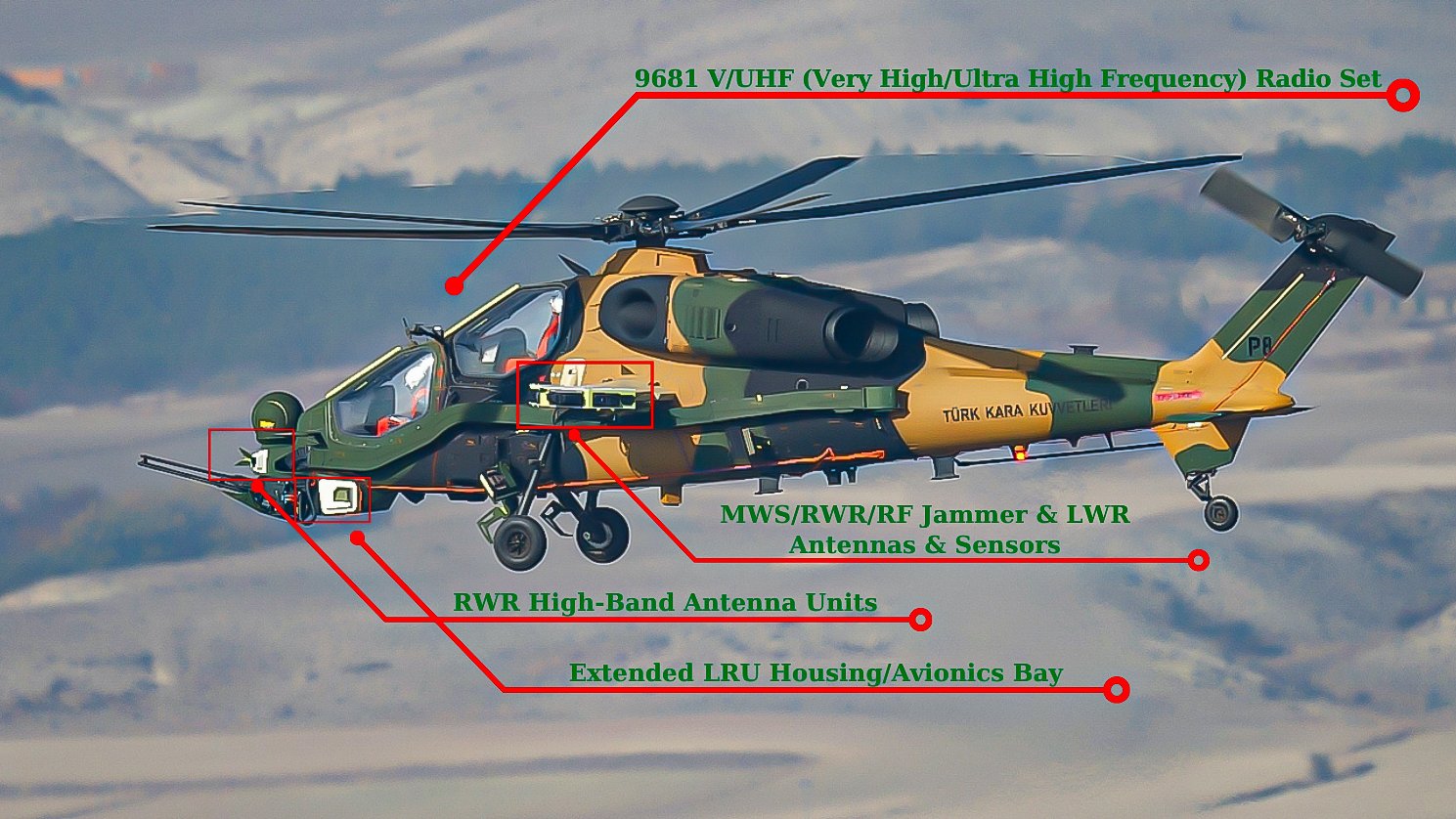Hello, I'm a new user.
Recently I've been digging a bit about the T129 ATAK, but unfortunatly there's not that much detailed information about it in English available for free.
May I ask if someone of you can clarify some doubts I have?
The recently introduced T-129B Phase 2 variant of the ATAK has a quite advanced self-defence suite, basically developed entirely by the Turkish industry, with the main contribute by Aselsan.
It comprises a RF jammer, the UVIS missile approach warning system (also with 2 extra sensors compared to the Phase 1), the LIAS laser warning receiver and radar warning receiver.
What I don't understand is if the previous T-129B Phase 1 completely lacked the RWR and LWR sensors.
It obviously had the UV missile approach warning systems on the extremity of the stub wings, but I can't seem to find anything resembling a RWR or LWR in any photo.
Thanks to anyone who can clarify this











